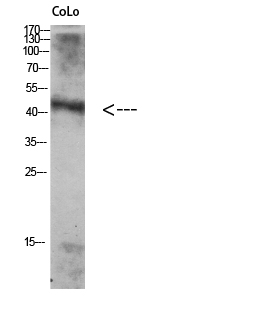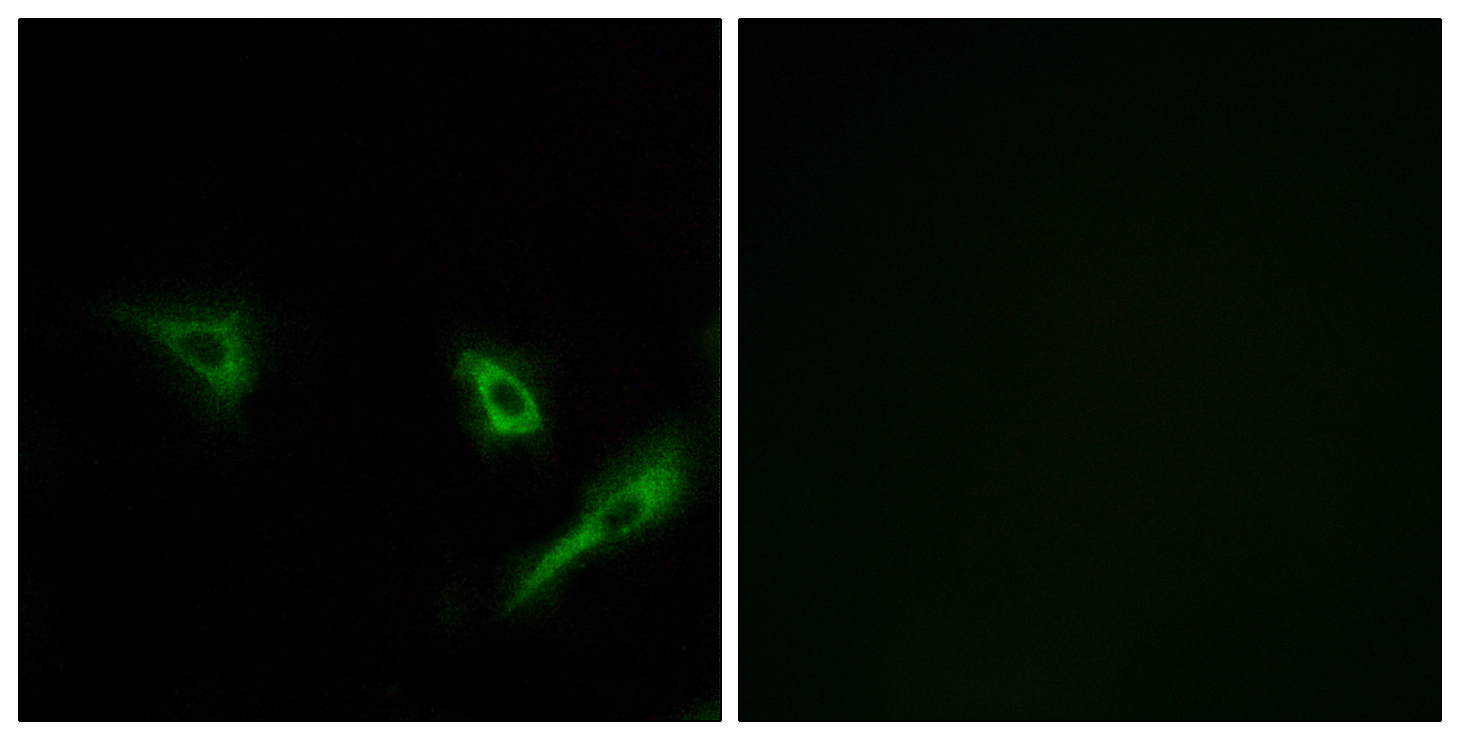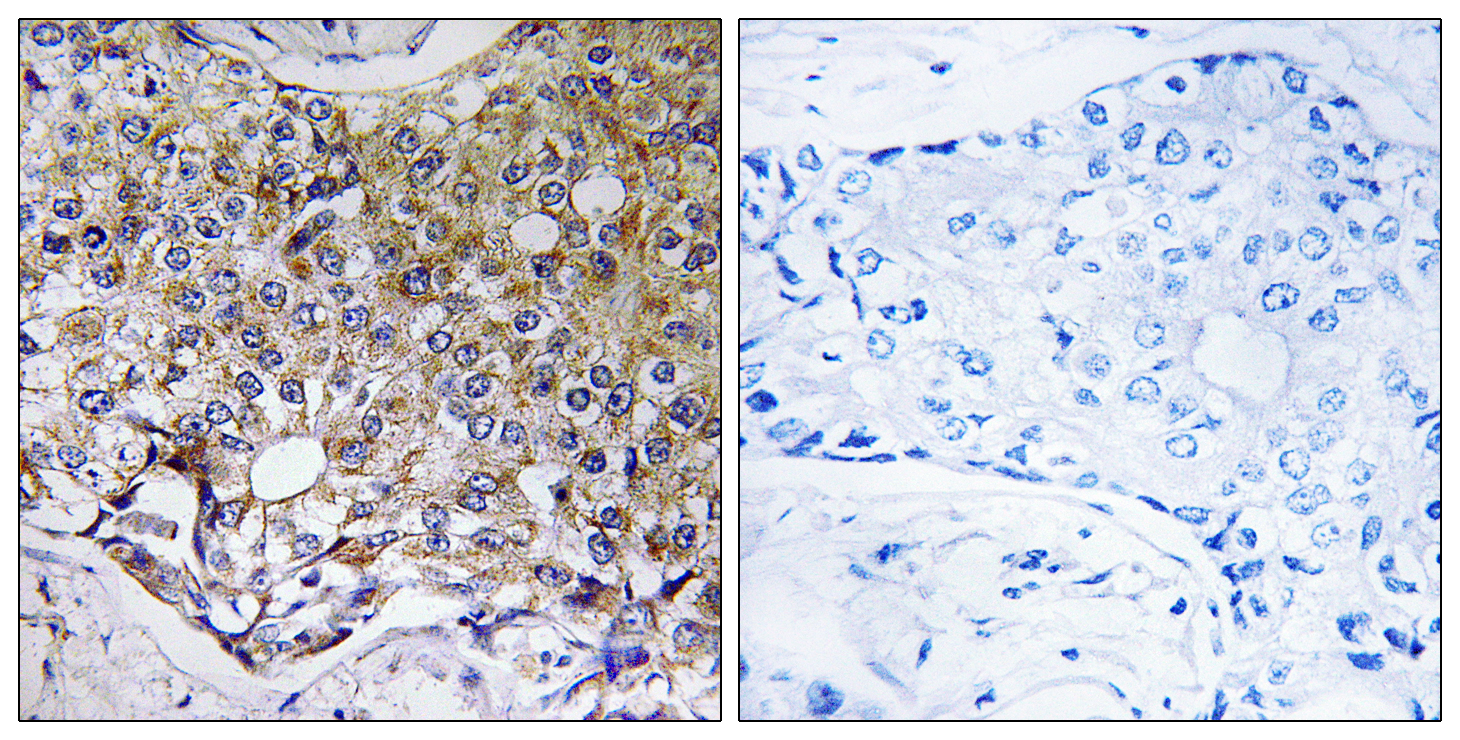Atg4A Polyclonal Antibody
- 货号:YT0393
- 应用:WB;IHC;IF;ELISA
- 种属:Human;Mouse
- 简介:
- >>Autophagy - other;>>Autophagy - animal
- 蛋白名称:
- Cysteine protease ATG4A
- 免疫原:
- The antiserum was produced against synthesized peptide derived from human ATG4A. AA range:81-130
- 特异性:
- Atg4A Polyclonal Antibody detects endogenous levels of Atg4A protein.
- 组成:
- Liquid in PBS containing 50% glycerol, 0.5% BSA and 0.02% sodium azide.
- 来源:
- Polyclonal, Rabbit,IgG
- 稀释:
- WB 1:500 - 1:2000. IHC 1:100 - 1:300. IF 1:200 - 1:1000. ELISA: 1:20000. Not yet tested in other applications.
- 纯化工艺:
- The antibody was affinity-purified from rabbit antiserum by affinity-chromatography using epitope-specific immunogen.
- 储存:
- -15°C to -25°C/1 year(Do not lower than -25°C)
- 其他名称:
- ATG4A;APG4A;AUTL2;Cysteine protease ATG4A;AUT-like 2 cysteine endopeptidase;Autophagin-2;Autophagy-related cysteine endopeptidase 2;Autophagy-related protein 4 homolog A;hAPG4A
- 背景:
- Autophagy is the process by which endogenous proteins and damaged organelles are destroyed intracellularly. Autophagy is postulated to be essential for cell homeostasis and cell remodeling during differentiation, metamorphosis, non-apoptotic cell death, and aging. Reduced levels of autophagy have been described in some malignant tumors, and a role for autophagy in controlling the unregulated cell growth linked to cancer has been proposed. This gene encodes a member of the autophagin protein family. The encoded protein is also designated as a member of the C-54 family of cysteine proteases. [provided by RefSeq, Mar 2016],
- 功能:
- enzyme regulation:Inhibited by N-ethylmaleimide.,function:Cysteine protease required for autophagy, which cleaves the C-terminal part of either MAP1LC3, GABARAPL2 or GABARAP, allowing the liberation of form I. A subpopulation of form I is subsequently converted to a smaller form (form II). Form II, with a revealed C-terminal glycine, is considered to be the phosphatidylethanolamine (PE)-conjugated form, and has the capacity for the binding to autophagosomes. Preferred substrate is GABARAPL2 followed by MAP1LC3A and GABARAP.,similarity:Belongs to the peptidase C54 family.,tissue specificity:Widely expressed, at a low level, and the highest expression is observed in skeletal muscle and brain. Also detected in fetal liver.,
- 组织表达:
- Epithelium,Kidney,Ovary,Prostate,Testis,

- Western Blot analysis of Colo using Antibody diluted at 1:1000. Secondary antibody(catalog#:RS0002) was diluted at 1:20000

- Immunofluorescence analysis of A549 cells, using ATG4A Antibody. The picture on the right is blocked with the synthesized peptide.

- Immunohistochemistry analysis of paraffin-embedded human breast carcinoma tissue, using ATG4A Antibody. The picture on the right is blocked with the synthesized peptide.






